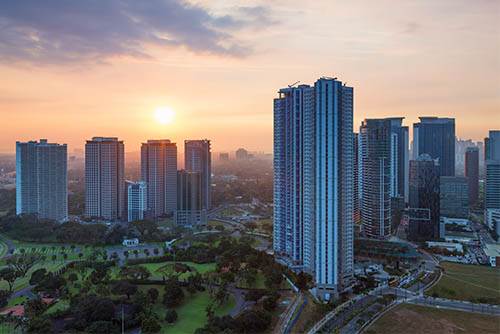
Reading Time: minutes
KMC-Savills highlighted the key role of the upcoming administration's policies in sustaining the Philippines' growth story in its latest Asian Cities 1H 2016 report, stating that while the incumbent's policies have been effective in positioning the country towards growth, further actions from the newly elected administration will dictate its future trajectory.
"Much of the recent years' economic growth and stability is attributable to the current administration. Under the six-year term of the outgoing president Aquino, the Philippines' GDP growth has averaged 5.9% but more importantly, the country has taken a big leap in terms of fiscal consolidation and reforms to fight corruption."
"Despite the effectiveness of the current administration, certain areas of the economy have been left unimproved, thereby requiring action from the new administration."
KMC emphasized the need for higher government spending and capital formation to ensure inclusive and sustainable growth. According to the report, the new administration also needs to prioritize improving infrastructure to boost the manufacturing industry and diversify the economy, as it is entirely dependent on the service sector (which accounts for 5.7% of the GDP).
"Overall, growth is expected to accelerate in 2016 from last year. In the short term, the election spending is likely to support GDP growth but to sustain this in the long term, the structural challenges need to be addressed," the report said.
Positive investor outlook remains
The Philippines is likely to retain its current positive growth and real estate will continue to benefit from it.
According to KMC-Savills, "major financial institutions forecast that the Philippines' GDP will grow by 6.3% to 6.5% in the next couple of years which is much higher than the expected global growth of 2.9% and the forecast for developing economies of 4.8% in 2016."
Real estate demand is still driven by the outsourcing and offshoring industry (O&O), where majority is currently in the office market but with "a spillover effect on the residential and retail sectors".
Local developers remain as the most active investors, maximizing the opportunity in increased occupier demand. "Local developers remain extremely aggressive and are injecting large amounts of liquidity with record-breaking investment agendas. Capital expenditure programs are expected to reach the PHP370 billion (US$7.8 billion) level in 2016, an increase of 2.9% compared to PHP360 billion (US$7.9 billion) in 2015."
The Philippines' strict foreign ownership law still remains as the obstacle to a greater participation from overseas investors, although they are still able to participate via joint venture partnerships or debt funding.
"Last year, the notable foreign investments included the US$150 million debt facility by ADM Capital and Baring Private Equity for the funding of five office buildings in Clark and the joint venture partnership of Mitsubishi and local developer Century Properties for Forbes Media Tower, a 95,000 sq m mixed-use project in Makati City."
Offices remain as the most wanted asset class
The report also highlighted the continued growth of Metro Manila's office market. With Manila being ranked among the best outsourcing destinations in the world, the ongoing expansion of the outsourcing industry will likely continue to drive majority of the take-up.
"Given the growth projections of the O&O sector, net take-up is expected to reach 450,000 to 500,000 sq m in 2016 as the markets will see more supply." wrote KMC-Savills.
"Manila offices are returning exceptionally high rental yields, a trend outperforming most of the markets in the region and demonstrating the highest yield spread when compared to other cities in the Asia-Pacific."
You may download the full report here.

